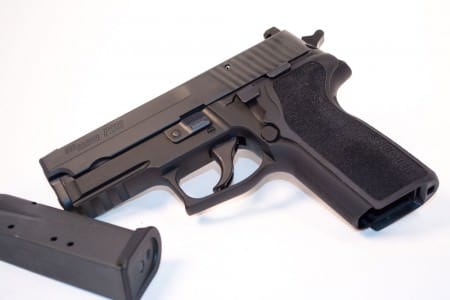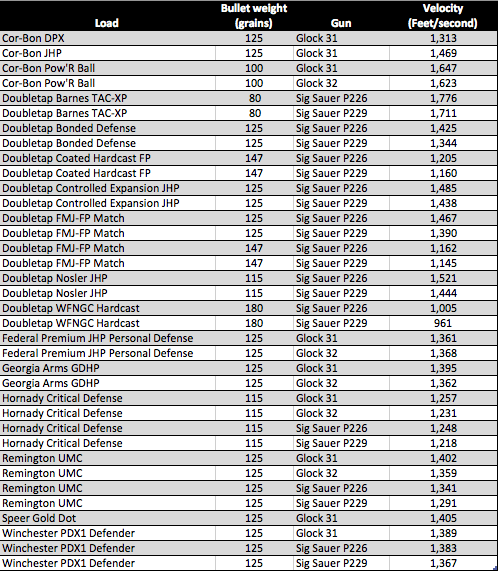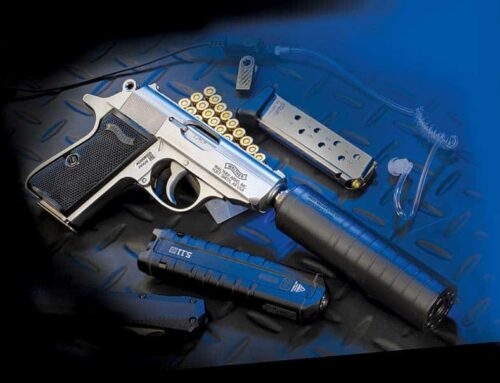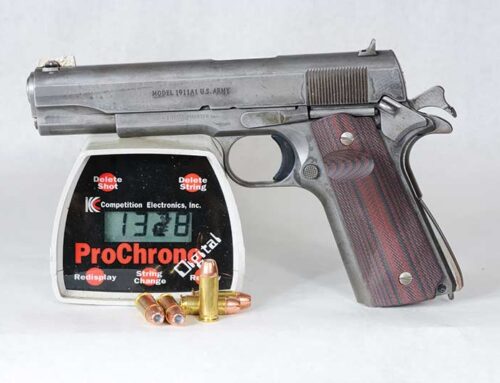I dig the .357 Sig.
In fact, I dig it so much, I feel like I’m on a one-man campaign to help boost it into the shooting mainstream. One of the biggest gripes people have about the .357 Sig cartridge is the cost, but that becomes a non-issue as more people start to use it. Volume begets cheapness – the more they make, the lower the cost. Whatever your position on the caliber wars, you have to admit that 9mm is making a resurgence as a great defensive caliber, and hey, .357 is a 9mm on steroids, right?
What is the .357 Sig?

One of my favorite .357 Sig launching platforms – the Sig Sauer P229.
Some folks refer to this cartridge as a necked-down .40 Smith & Wesson. Conceptually, that’s kinda true, but there are technical differences. The cartridge base is the same dimension and the main part of the case body is the same diameter, but the .357 Sig case is not made from a .40 S&W case. The projectile is the same as a 9mm at .355 inches diameter.
Because of these similarities to the .40 S&W, you can often just swap barrels to change your pistol from .40 S&W to .357 Sig or vice versa. Magazines are generally compatible between the two calibers as well. Always check with your particular handgun manufacturer first before embarking on caliber changes.
If you want to understand the benefit of .357 Sig, just think this. It’s got the magazine capacity of a .40 S&W in any given gun, and it has a 200 to 400 foot per second velocity advantage over 9mm, depending on the load. While .357 Sig can’t match the specs of those uber-macho 158 grain .357 Magnum loads, it does compare favorably with 125 grain .357 Magnum.
One other thing to note. The .357 Sig is a bottleneck-shaped cartridge. This provides another hidden advantage – feeding is exceptionally reliable. With any of the four .357 Sig pistols I currently have (Sig P226, Sig P229, Glock 32 and Glock 31), I can limp wrist like Pee Wee Herman and the guns will still cycle properly.
Ballistic Science
Earlier I mentioned that .357 Sig approaches .357 Magnum territory, but from a semi-automatic pistol. It’s close. Real close. To see how close, I went out to the range and clocked a slew of them using a Shooting Crony Beta Master chronograph placed 15 feet down range. Here’s what I found.
Of all the loads I tested, average velocity was 1,363 feet per second, and that includes those fat and (relatively) slow 180 grain hard cast cruisers from Doubletap Ammunition.
Read the rest at AmmoLand!
Looking for Christmas gift ideas?
Be sure to check out our latest books! They are ON SALE now for a limited time!













He forgot the awesome innate accuracy, flat trajectory and the barrier penetration that sets this cartridge apart. Plus it hits like a lightning!!
If you can live with the over penetration. Two agency shootings and way to much.